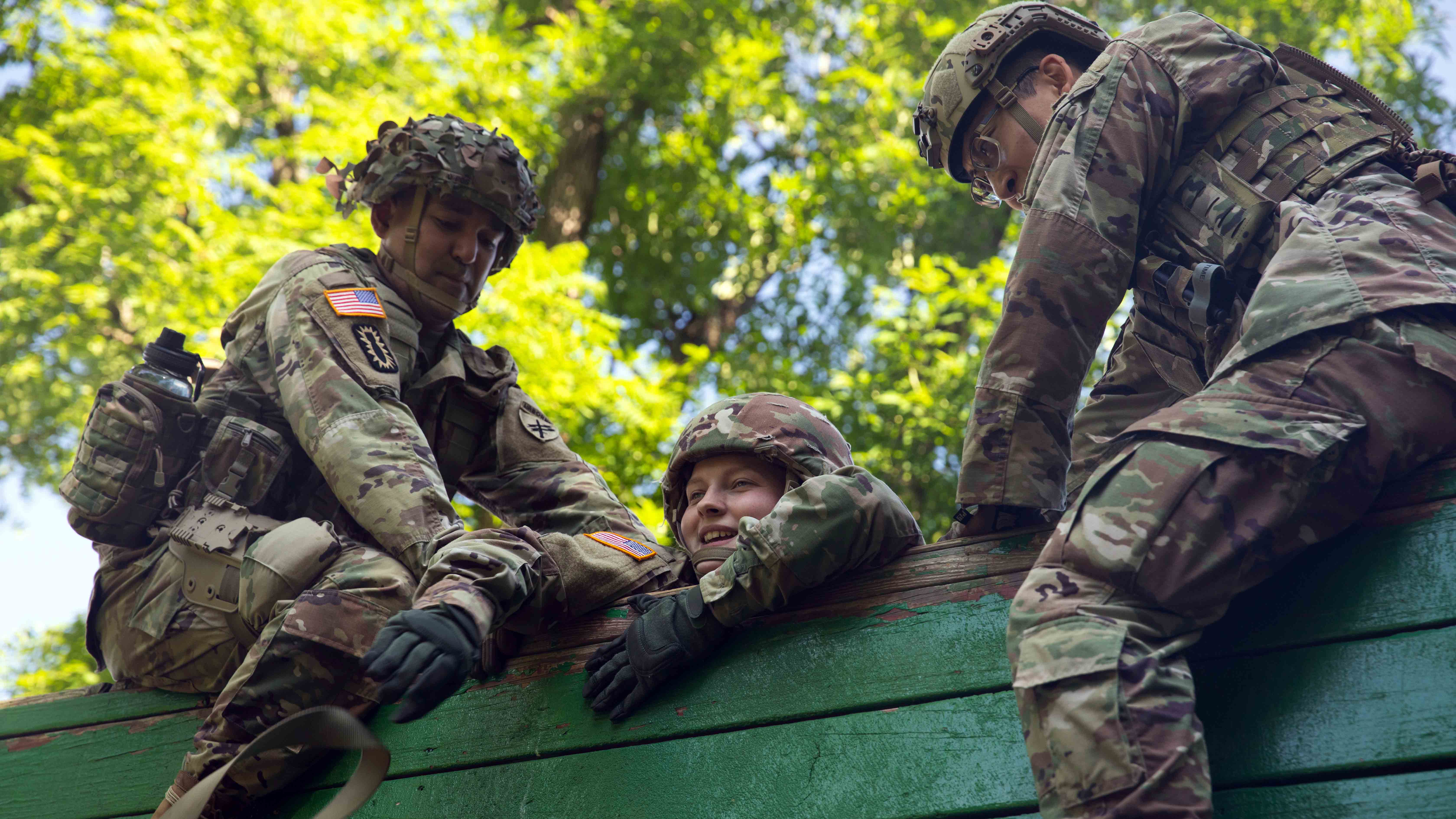Team Sets Out to Help Build Stronger Units
Team Sets Out to Help Build Stronger Units

An Army element created in the wake of internal scrutiny following Spc. Vanessa Guillen's 2020 disappearance and death outside the former Fort Hood, Texas, is getting a new name—and a sustained mission to help units thrive.
The former Cohesion Assessment Team, which was made a permanent Army institution last year following a two-year pilot program, is now the Cohesion Assistance Team, said Maj. Gen. John Kline, commander of the Army's Center for Initial Military Training. This change, Kline told a Warriors Corner audience Oct. 10 at the Association of the U.S. Army’s 2023 Annual Meeting and Exposition, reflects the true objective of the team: not to deliver scrutiny, but support and find ways to improve.
The team is part of the People First Task Force, which was established in December 2020 based on recommendations from the Fort Hood Independent Review Committee. Its work will take it across the Army at a rate of one unit every two months, or six per year, and team members will work with the local command structure to identify problems and propose solutions based on existing Army doctrine. Initially an “ad hoc” group, the Cohesion Assistance Team now has 13 established members, led by Col. Jason Buursma, and a protocol for how it evaluates units and delivers feedback.
“No outbriefs go beyond the two-star level, so we don't jeopardize feelings of trust,” Kline said. “And we wanted to add a solutions portion to this thing. We didn't want to just find things that are challenges and not offer some assistance.”
With six units already visited under the team’s previous heading, Kline said several trends have already been identified as common points of morale breakdown and unhealthy dynamics. Among these, he said, are failure to appropriately welcome and integrate new team members and junior soldiers; perceptions of leaders’ unfairness and partiality; a lack of professional development, counseling and mentorship; “learned helplessness” by leaders in responding to potentially harmful behaviors; and “breaking teams” to make teams.
As an example of this last trend, Kline described a unit the team visited that was frequently tasked with conducting military funeral details for retired service members. A small team of soldiers was repeatedly tasked with executing these details, often at the rate of three funerals per week. Constantly in the process of preparing for or carrying out these funerals, the soldiers were not only in an emotionally heavy environment most of the time, they also were isolated from their other unit members, Kline said.
“I don’t need data to show that they’re more apt to do something regrettable,” he said.
The learned helplessness of leaders comes into play, Kline said, around conditions that they feel unable to change, such as installations seen as undesirable or soldiers’ suboptimal housing. These negative narratives, Kline said, are “cancerous within the formation.” He said the team is encouraging commanders to internalize new information, so they’re equipped with facts instead of negative rumors, and to work to do what they can to address existing problems.
As more data is collected and procedure finessed, Kline said the team may be “right-sized” and information compiled so that more correlations can be made to improve unit functions across the Army. The team, he said, is also looking to capitalize on the best practices they observe on unit visits.
“I think one thing that’s very central [in successful units] is just their ability to communicate vertically. … Junior soldiers have an understanding with some predictability on what’s going to happen a week out, two weeks out,” Kline said. ‘So, those commanders that are really transparent, that are really good with communication, those tend to do a lot better.”
— Hope Hodge Seck for AUSA

